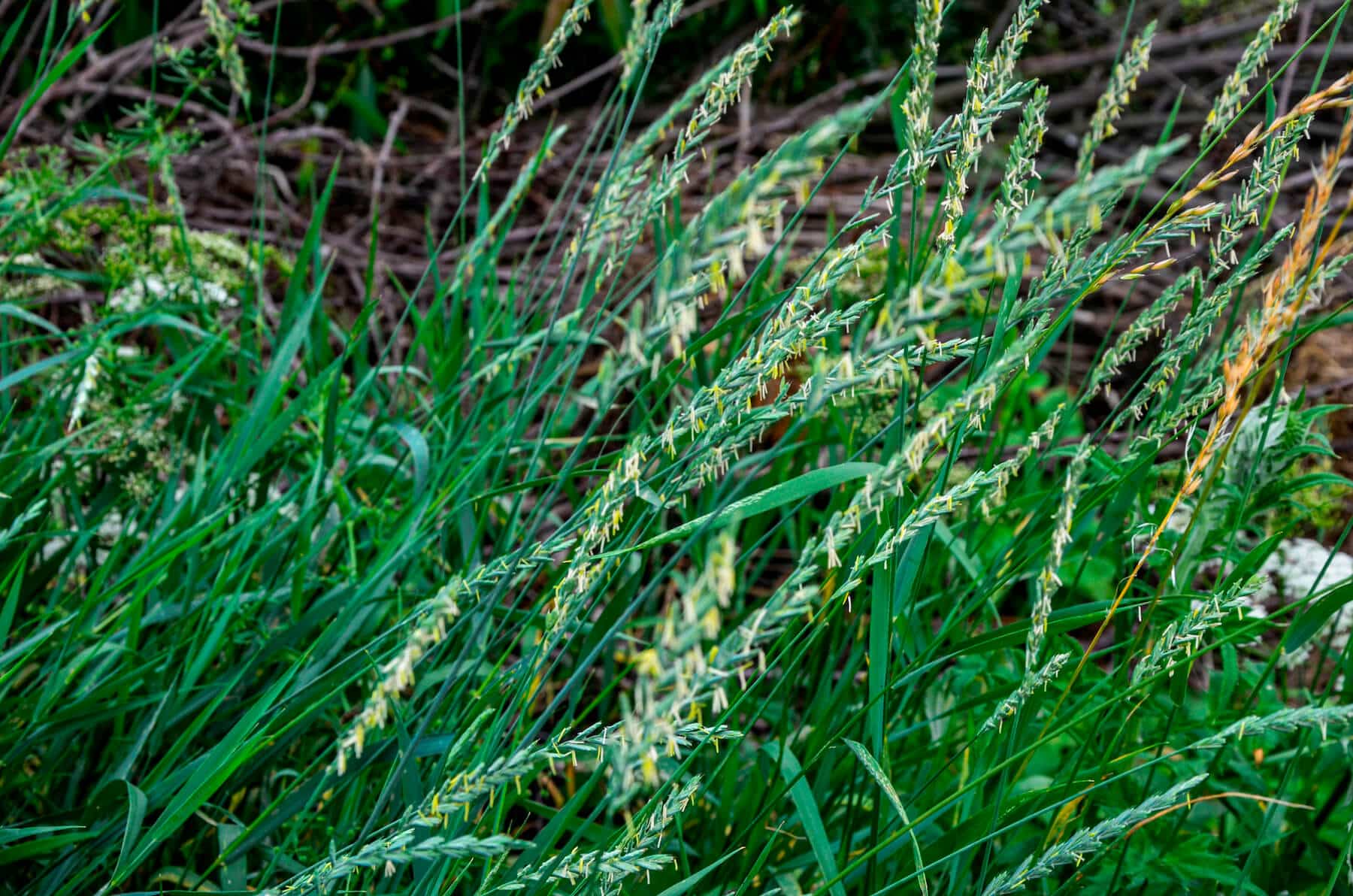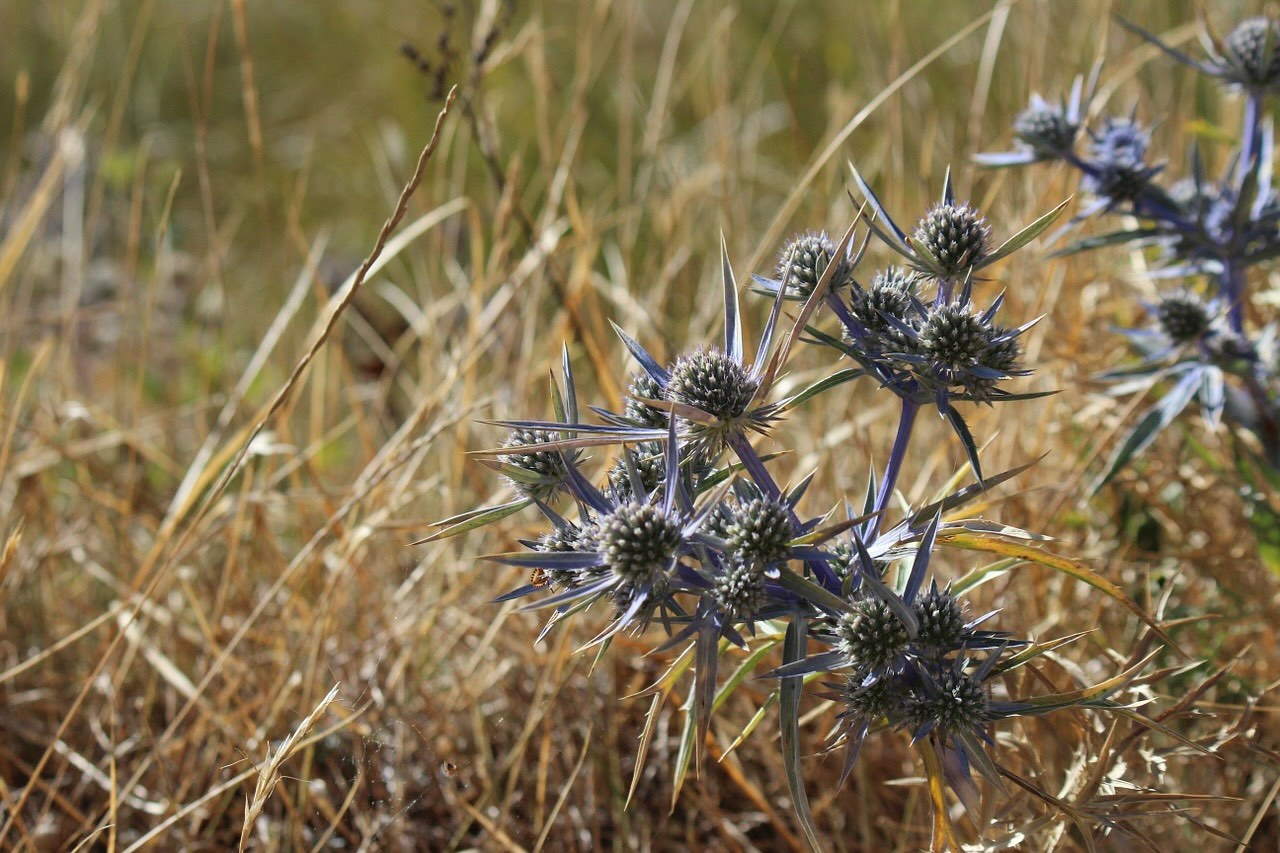Home>Gardening & Outdoor>Landscaping Ideas>How To Get Rid Of Quack Grass Organically


Landscaping Ideas
How To Get Rid Of Quack Grass Organically
Modified: August 28, 2024
Discover effective organic methods for eliminating quack grass in your landscaping with our expert tips and techniques. Create a lush, weed-free garden naturally.
(Many of the links in this article redirect to a specific reviewed product. Your purchase of these products through affiliate links helps to generate commission for Storables.com, at no extra cost. Learn more)
Introduction
Welcome to the battle against quack grass! If you've ever found yourself locked in combat with this persistent and invasive weed, you know just how challenging it can be to eradicate. However, fear not, for there are organic methods that can help you reclaim your lawn and garden from the clutches of quack grass.
In this comprehensive guide, we will delve into the world of quack grass, understanding its characteristics and growth patterns. We'll explore organic techniques for removing quack grass without resorting to harsh chemicals, and we'll discuss how to create a healthy, robust lawn that is inhospitable to this pesky intruder.
So, grab your gardening gloves and let's embark on a journey to reclaim your outdoor space from the clutches of quack grass. With a bit of knowledge and a touch of perseverance, you can restore your lawn and garden to its former glory, free from the tyranny of quack grass.
Key Takeaways:
- Say goodbye to quack grass organically! Use hand pulling, smothering, and vinegar solutions to remove it. Keep your lawn healthy to prevent its return.
- Combat quack grass with organic methods like soil solarization and natural weed suppressants. Maintain a healthy lawn to keep it at bay.
Read more: How To Get Rid Of Grasshoppers
Understanding Quack Grass
Quack grass, also known as couch grass or twitch grass, is a perennial weed that can be a formidable foe in your quest for a pristine lawn and garden. This resilient plant spreads through an extensive network of underground rhizomes, making it notoriously difficult to eradicate. Its wiry, creeping rhizomes allow it to infiltrate lawns, flower beds, and vegetable gardens, often outcompeting desired plants for resources.
Identifying quack grass is crucial for effective control. Its long, slender leaves and upright growth habit set it apart from surrounding grasses and plants. The presence of white, creeping rhizomes just below the soil surface is a key characteristic that distinguishes quack grass from other grassy weeds.
Understanding the growth habits of quack grass is essential for successful eradication. This weed thrives in a wide range of soil types and is particularly adept at colonizing areas with poor soil fertility. It exhibits remarkable resilience to adverse conditions, including drought and low mowing heights. Furthermore, the ability of its rhizomes to regenerate new shoots from small fragments makes mechanical removal a daunting task.
Quack grass is a master of survival, but armed with knowledge and organic strategies, you can reclaim your outdoor space from its clutches. In the following sections, we will explore effective and environmentally friendly methods for removing quack grass and creating a healthy lawn that is inhospitable to its encroachment.
Organic Methods for Removing Quack Grass
When it comes to combating quack grass, organic methods offer a sustainable and environmentally friendly approach. By leveraging natural processes and non-toxic remedies, you can effectively diminish the presence of quack grass in your lawn and garden. Let’s explore some organic techniques for removing quack grass:
- Hand Pulling: While labor-intensive, hand pulling remains a reliable method for controlling quack grass. To maximize effectiveness, ensure that you remove the entire root system, including the rhizomes. Regular monitoring and persistent removal of emerging shoots can gradually deplete the quack grass population.
- Smothering: Covering infested areas with a thick layer of mulch or cardboard can effectively smother quack grass. This method deprives the weed of sunlight, hindering its ability to photosynthesize and grow. Over time, the lack of light and resources weakens the quack grass, facilitating its removal.
- Soil Solarization: By covering the affected soil with a clear plastic tarp during the warmest months, you can harness solar energy to heat the soil and eradicate quack grass. This process, known as soil solarization, effectively kills quack grass and its rhizomes through the intense heat generated under the tarp.
- Vinegar Solution: Utilizing a solution of horticultural vinegar (acetic acid) can be an effective organic herbicidal treatment for quack grass. When applied directly to the foliage, the acetic acid disrupts the plant cells, leading to desiccation and eventual die-off. However, caution must be exercised to avoid harming desirable plants, as vinegar can have non-selective effects.
- Organic Herbicidal Products: Several commercially available organic herbicidal products, formulated with natural ingredients such as clove oil or citric acid, offer targeted control of quack grass. These products provide a viable alternative to synthetic herbicides, enabling you to combat quack grass without compromising environmental integrity.
It’s important to note that consistent application of these organic methods, combined with vigilance and patience, is key to achieving successful quack grass removal. By integrating these techniques into your lawn and garden care regimen, you can gradually diminish the presence of quack grass while fostering a thriving and resilient outdoor space.
To get rid of quack grass organically, you can smother it by covering the affected area with a thick layer of mulch or cardboard. This will block out sunlight and prevent the grass from growing.
Creating a Healthy Lawn to Prevent Quack Grass
Prevention is often the most effective strategy in the battle against quack grass. By establishing and maintaining a robust, healthy lawn, you can create an environment that is less susceptible to quack grass infestation. Here are some organic practices to promote a lush and resilient lawn while deterring the encroachment of quack grass:
- Proper Lawn Care: Regular mowing at the appropriate height, typically 2.5 to 3 inches for most grass species, encourages strong root development and shading of the soil. This shading inhibits the germination and growth of quack grass seeds, reducing its establishment in the lawn.
- Adequate Watering: Deep, infrequent watering promotes deep root growth in your lawn, enhancing its resilience against invasive weeds like quack grass. Watering in the early morning minimizes moisture retention on the grass blades, reducing the risk of fungal diseases and creating an unfavorable environment for quack grass growth.
- Overseeding and Aeration: Periodic overseeding and core aeration help thicken the turf and improve soil structure, creating a dense and healthy lawn that competes effectively with quack grass. Aeration alleviates soil compaction and enhances nutrient and water absorption, fostering an environment conducive to desirable grass species.
- Soil Amendment: Regularly amending the soil with organic matter, such as compost or well-decomposed manure, enriches the soil structure and fertility. Healthy, nutrient-rich soil supports vigorous grass growth, reducing the likelihood of quack grass intrusion.
- Natural Weed Suppressants: Utilizing natural weed suppressants, such as corn gluten meal, can inhibit the germination of quack grass seeds and other weeds. This organic approach serves as a pre-emptive measure to prevent the establishment of quack grass in your lawn.
By implementing these organic lawn care practices, you can fortify your turf against the encroachment of quack grass while nurturing a vibrant and resilient lawn. A healthy lawn not only enhances the aesthetic appeal of your outdoor space but also serves as a natural barrier against invasive weeds, fostering a harmonious and thriving environment for your plants and family to enjoy.
Conclusion
Congratulations on arming yourself with valuable insights and organic strategies for combatting quack grass. By understanding the tenacious nature of this perennial weed and implementing environmentally friendly removal methods, you are well-equipped to reclaim your lawn and garden from its clutches.
Remember, persistence and vigilance are essential in the ongoing battle against quack grass. Through diligent hand pulling, smothering, and soil solarization, you can gradually diminish the presence of this invasive weed in your outdoor space. Additionally, the judicious use of organic herbicidal treatments and natural weed suppressants offers targeted control while preserving the ecological balance of your garden.
Furthermore, by fostering a healthy and robust lawn through proper care, watering, and soil amendment, you can create an inhospitable environment for quack grass, minimizing its ability to establish and spread. A thriving lawn not only enhances the beauty of your outdoor space but also serves as a natural deterrent against the encroachment of unwanted weeds.
As you embark on this journey to rid your lawn and garden of quack grass, remember that each small victory contributes to the overall success of your efforts. With patience, dedication, and a commitment to organic practices, you can transform your outdoor space into a flourishing oasis, free from the tyranny of quack grass.
So, roll up your sleeves, don your gardening gloves, and take pride in your role as a steward of a vibrant and thriving landscape. With your newfound knowledge and organic arsenal, you are well-prepared to create a resilient and quack grass-free outdoor haven for yourself, your family, and the natural world around you.
Frequently Asked Questions about How To Get Rid Of Quack Grass Organically
Was this page helpful?
At Storables.com, we guarantee accurate and reliable information. Our content, validated by Expert Board Contributors, is crafted following stringent Editorial Policies. We're committed to providing you with well-researched, expert-backed insights for all your informational needs.
















0 thoughts on “How To Get Rid Of Quack Grass Organically”